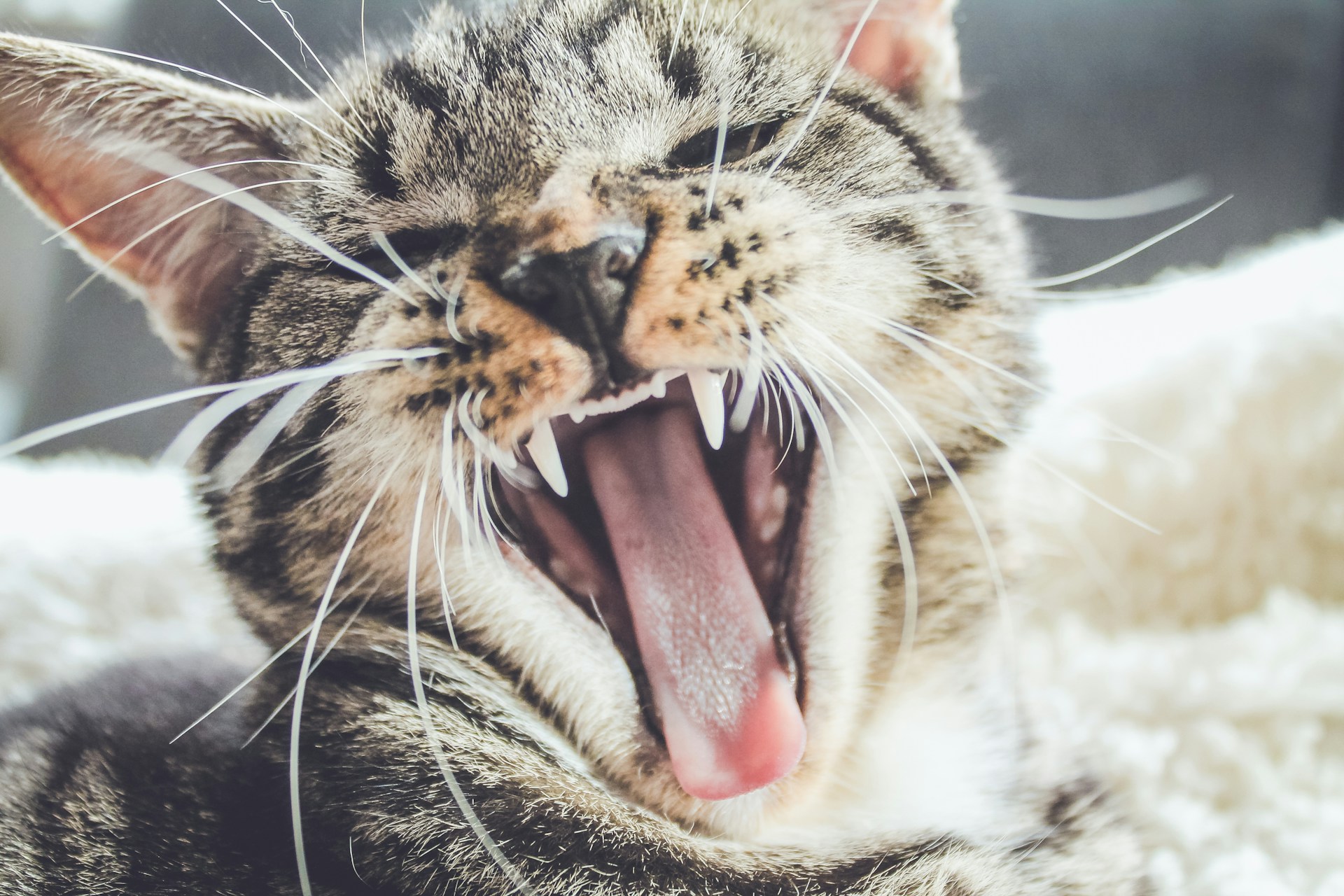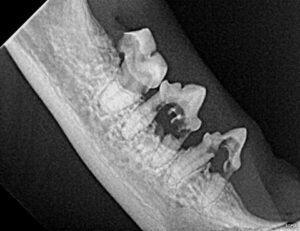
07 Dec What is Feline Tooth Resorption?
Tooth resorption can occur in dogs (and people!) as well, but it is one of the most common dental conditions seen in cats. Teeth are composed of a pulp chamber, dentin, and enamel. The pulp chamber contains the nerve and blood supply of the tooth, dentin is a hard white substance that makes up the bulk of the tooth, and enamel is the shiny, hard white outer coating.
Tooth resorption occurs when the dentin erodes and becomes destroyed. This can occur in the root or crown of the tooth, and in severe cases, can progress to involve the entire tooth. The condition is considered to be painful when the resorptive lesion is affecting the crown of the tooth, exposing the pulp chamber to the mouth.

Tooth resorption on the right mandible.
The cause of tooth resorption is not well understood. Some cats may only have one tooth that is affected, while others may have one tooth after another that undergoes resorption. The most commonly affected teeth in cats are mandibular premolars, especially the third premolar. The only treatment for feline tooth resorption is to extract the affected tooth.

Tooth resorption on the left mandible.
What does feline tooth resorption look like?
Tooth resorption that is affecting the crown of a tooth can often be identified visually by your veterinarian during an awake oral exam. Tooth resorption has a characteristic appearance on the crown, where dark red tissue appears on the tooth. Sometimes it may look like the gum tissue is growing over the crown, or it may look like a bite has been taken from the tooth. Cats with this type of tooth resorption tend to experience a lot of pain in the area and may be resistant to oral exams. They may experience jaw chattering if the tooth or surrounding tissue is touched.

Tooth resorption on the right mandible of a cat.

What about tooth resorption in the root?
Feline tooth resorption in the root of the tooth is best identified on dental imaging such as cone beam CT or intraoral x-rays. The edges of these roots may have a fuzzy-looking appearance, may be very irregular or the roots may be difficult to differentiate from the surrounding bone.
How Is Tooth Resorption Treated?
Tooth resorption affecting the crown of the tooth is a very painful condition. These teeth must be extracted as there is no other appropriate treatment. Tooth resorption affecting the root of the tooth is not considered painful, but the resorption can progress to the crown of the tooth at any time. Extraction of these teeth may also be recommended, or in some cases, it may be appropriate to monitor the teeth for progression.
Cat Dentist in Fort Collins, Colorado
Tooth resorption is a common condition in cats. If you have an adult cat showing signs of oral pain or who has never had an oral examination with your veterinarian, schedule an appointment with your Veterinary DentistTM today!
Images used under creative commons license – commercial use (12/7/2023). Photo by Erik-Jan Leusink on Unsplash



